
Mosaic - the art of creating a complete picture from many small individual pieces
Mosaic is the technique of creating artistic images or decorative ornaments on various surfaces by attaching a large number of small pieces of hard materials to a base. Mosaics are also commonly used to refer to works of art created using this ancient technique.
 Mosaic. Detail of a Palaeochristian mosaic from the Basilica of Santa Pudenziana in Rome, 410 AD
Mosaic. Detail of a Palaeochristian mosaic from the Basilica of Santa Pudenziana in Rome, 410 AD
Mosaic, along with marquetry and intarsia, is one of the most widespread forms of inlay. It has been used since ancient times in the visual, monumental, and decorative arts of most world cultures.
 Mosaic. Mosaic on the wall of St Peter's Basilica in the Vatican, 17th century
Mosaic. Mosaic on the wall of St Peter's Basilica in the Vatican, 17th century
Methods of laying and primary materials for creating mosaics
Mosaic is both a meticulous process that demands great patience from the artist and a unique art form that inspires admiration. Despite the wide variety of materials used, there are only two primary methods of laying mosaic elements: direct and reverse.
 Mosaic. Ancient Greek mosaic on the floor of the Rhodes Palace, 2nd century BC
Mosaic. Ancient Greek mosaic on the floor of the Rhodes Palace, 2nd century BC
In the direct method, the artist directly adheres mosaic pieces to a prepared surface. This laying technique has been used for a very long time and has undergone minimal changes over the millennia. It is indispensable in creating original artistic mosaic compositions.
 Mosaic. Golden mosaics in the dome of the Great Mosque in Corduba, 10th century
Mosaic. Golden mosaics in the dome of the Great Mosque in Corduba, 10th century
The reverse method gained popularity in the 20th century. It involves first attaching the mosaic elements face down to a paper sheet and then affixing the resulting canvas to the base. This method is often used by construction masters to expedite and simplify the process of decorative wall finishing during renovations.
 Mosaic. Islamic ornamental mosaics on the Tomb of Hafez in Iran, 16th century
Mosaic. Islamic ornamental mosaics on the Tomb of Hafez in Iran, 16th century
Mosaic panels and pictures must be not only durable but also resistant to temperature and humidity fluctuations. Therefore, artists often use the following materials for creating mosaics:
- Ceramic tiles.
- Enamel.
- Natural stone.
- Beads.
- Mollusk shells.
- Metal.
 Mosaic. Mosaic of Christ Almighty from the Cathedral of Hagia Sophia in Constantinople, 12th century
Mosaic. Mosaic of Christ Almighty from the Cathedral of Hagia Sophia in Constantinople, 12th century
Enamel consists of colored glass pieces made using a special process with mineral pigments. Depending on the additives, it can be transparent or matte and can have one or multiple shades.
 Mosaic. Mosaic of the apse in Santa Maria Maggiore, 13th century
Mosaic. Mosaic of the apse in Santa Maria Maggiore, 13th century
History of Mosaic
The history of mosaic art has deep roots in ancient times. The earliest examples of this technique's masterpieces were discovered in the territory of modern-day Iraq, in the lower regions of the Euphrates River, dating back to the second half of the fourth millennium BCE.
At that time, the city of Ur, belonging to the Sumerian civilization, was located here. The oldest mosaic was made of fired clay cones deeply embedded in the wall and covered with colorful glaze. It represents an interweaving of various geometric patterns and has been remarkably well-preserved to this day.
 Mosaic. The oldest example of Greek mosaics in the city of Gordion, 8th century BC
Mosaic. The oldest example of Greek mosaics in the city of Gordion, 8th century BC
By the 8th century BCE, the masters of ancient Greece learned to create ornamental mosaics from unprocessed sea pebbles, and 500 years later, they developed the technology of making enamel. The third century BCE is marked by the first mosaic panels in the form of narrative compositions on mythological themes. The mosaic panel "The Battle of Alexander the Great with Darius," known throughout the world, is estimated by historians to have been created around 125-120 BCE.
 Mosaic. Alexander the Great's battle with Darius, 2nd century BC
Mosaic. Alexander the Great's battle with Darius, 2nd century BC
Ancient Romans not only adopted the art of mosaic from the Greeks but also significantly expanded its scope. By the 2nd century BCE, mosaic paintings became an integral part of the interior decoration of imperial palaces, noble houses, and public baths. Floors, ceilings, and walls were adorned with artistic compositions depicting people, animals, gods, as well as various ornaments and patterns.
 Mosaic. Mosaic in the mausoleum of Galla Placidia, Ravenna, 5th century
Mosaic. Mosaic in the mausoleum of Galla Placidia, Ravenna, 5th century
After the fall of Rome under the pressure of barbarians in the 5th century, the center of European mosaic craftsmanship for many centuries became the Byzantine Empire. Here, with the recognition of Christianity as the state religion, mosaic regained its status as a high art form. Its application gradually narrowed down exclusively to the decoration of the interiors of churches.
 Mosaic. Mosaic of the vault of the Florence Baptistery, 14th century
Mosaic. Mosaic of the vault of the Florence Baptistery, 14th century
In the early 11th century, Byzantine mosaic art penetrated into Kievan Rus. Greek and Russian masters jointly created unique frescoes and mosaic panels that still adorn the walls of the Hagia Sophia Cathedral. Unfortunately, over the subsequent century, fresco painting almost completely displaced mosaic, not only in Eastern but also in Western Europe.
 Mosaic. Our Lady of Oranta in the Cathedral of St Sophia in Kiev, 11th century
Mosaic. Our Lady of Oranta in the Cathedral of St Sophia in Kiev, 11th century
The attitude towards mosaic in the Islamic world has always been ambiguous. While Eastern rulers have always sought to elegantly adorn their palaces and spared no expense on the work of skilled mosaic craftsmen, they still had to adhere to strict Quranic norms that prohibited the creation of artistic depictions of people and animals. In the countries of the Middle East, mosaic art only survived until the era of Arab conquests, and from the 8th century onwards, it disappeared completely.
 Mosaic. Umayyad mosaics in the palace of Hisham, 8th century
Mosaic. Umayyad mosaics in the palace of Hisham, 8th century
Interest in mosaic in Europe was briefly revived in the 16th century during the Baroque era. During this period, mosaic panels created based on the paintings of great masters once again adorned the interiors of many churches, including the interior of the grand St. Peter's Basilica in the Vatican, the principal church of Catholics. However, by the end of the following century, the fashion for mosaic in Europe had passed for good.
 Mosaic. Mosaic of the inner part of the dome of the chapel of the Madonna of Loreto, 17th century
Mosaic. Mosaic of the inner part of the dome of the chapel of the Madonna of Loreto, 17th century
In Russia, in the mid-18th century, the art of mosaic was seriously taken up by Mikhail Vasilyevich Lomonosov. The brilliant scientist developed over 100 unique samples of enamel and actively contributed to the development of the ancient craft. Lomonosov was passionately devoted to the idea of creating a cycle of 17 mosaic paintings depicting the life of Peter the Great for the Peter and Paul Cathedral. However, Catherine II was extremely displeased with the first painting by the master, "The Battle of Poltava," and the idea of reviving mosaic quickly faded.
 Mosaic. Mikhail Lomonosov. Mosaic of the Battle of Poltava, 1762-1764
Mosaic. Mikhail Lomonosov. Mosaic of the Battle of Poltava, 1762-1764
In the 20th century, a unique example of widespread use of mosaic in monumental art can be seen in the experience of the Soviet Union. In 1954, after coming to power following Stalin's death, Nikita Khrushchev declared war on the ornamentation of building exteriors with various architectural excesses. He called on builders to create simple and plain buildings, and soon the famous "Khrushchyovkas" appeared throughout the country.
 Mosaic. Soviet mosaic on the building of the Academy of Sciences in Ufa, 1970s
Mosaic. Soviet mosaic on the building of the Academy of Sciences in Ufa, 1970s
To decorate the monotonous buildings and structures, it was decided to use mosaic. Hundreds of artists were involved in the execution of this grand task, and they created thousands of paintings that glorified life in the USSR. These works formed the basis of mosaic panels adorning the exteriors of residential buildings, cultural and sports palaces, train stations, department stores, and other structures. Many of them can still be found on the streets and squares of the former Soviet Union.
 Mosaic. Mosaic of the Huichol tribe, 20th century
Mosaic. Mosaic of the Huichol tribe, 20th century
Today, artists rarely choose mosaic as their primary technique for creativity. However, this does not prevent us from enjoying the beauty of masterpieces created by skilled craftsmen from different historical periods in different corners of the world.
 Mosaic. Mosaic on Copacabana beach in Rio de Janeiro, 20th century
Mosaic. Mosaic on Copacabana beach in Rio de Janeiro, 20th century
On the Veryimportantlot platform, every visitor has the opportunity to engage with art and acquire mosaic through auctions, from contemporary artists, or through the sale of antiques.

 Portrait - a genre of painting: essence, types, history of the genre, famous portraits and portrait artists
Portrait - a genre of painting: essence, types, history of the genre, famous portraits and portrait artists 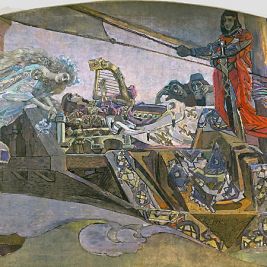 Modern - breakthrough or just a transitional period
Modern - breakthrough or just a transitional period  The engraving "Rhinoceros" by Albrecht Dürer - Europe's acquaintance with a curious beast
The engraving "Rhinoceros" by Albrecht Dürer - Europe's acquaintance with a curious beast  Surrealism and Abstract Gradients: Design Trends Shaping 2024
Surrealism and Abstract Gradients: Design Trends Shaping 2024  Acrylic is a painting technique and a type of artistic paint: essence, history, advantages, application
Acrylic is a painting technique and a type of artistic paint: essence, history, advantages, application 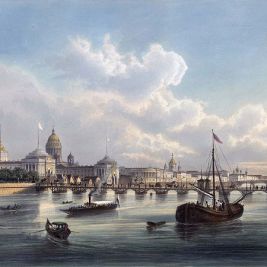 Lithography is a type of graphics and a masterpiece of art
Lithography is a type of graphics and a masterpiece of art 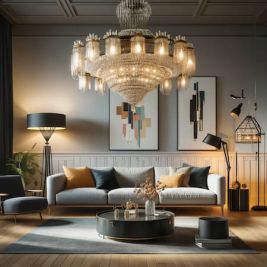 Illuminating the Past: The Rise of Vintage Lighting in Modern Decor
Illuminating the Past: The Rise of Vintage Lighting in Modern Decor 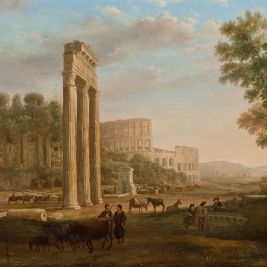 The most famous representatives of French classicism in painting
The most famous representatives of French classicism in painting 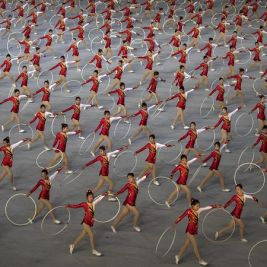 Documentary Photography: Photo story about important events and everyday life
Documentary Photography: Photo story about important events and everyday life 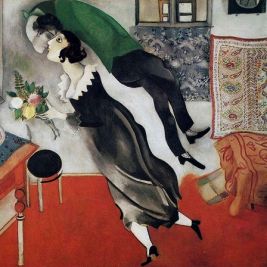 The painting "The birthday" by Marc Chagall is an ode to love capable of soaring above the everyday
The painting "The birthday" by Marc Chagall is an ode to love capable of soaring above the everyday